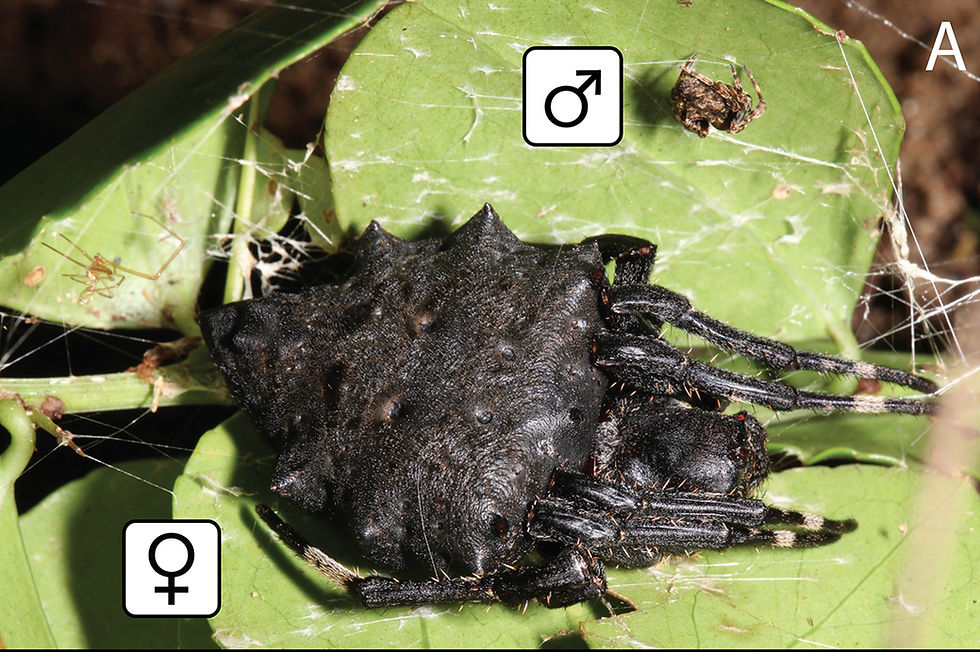Taxonomy, phylogeny, and size evolution in Megaraneus
- Matjaž Gregorič
- Sep 24
- 1 min read
Many spider species show large differences in size between males and females, but biologists still do not fully understand how or why this evolves. In this study we focused on the systematics and evolution of a little-known African spider, Megaraneus gabonensis, in which females are about four times larger than males.
We provided an overdue taxonomic description of the species and examined where the genus Megaraneus fits in the spider tree of life. Our findings show that this spider is a part of a clade that has previously been thought to live only in East Asia and Australia, but we now know it also occurs in Africa. We also found that in Megaraneus, the large size difference be-tween the sexes resulted primarily because females became larger, not because males would become smaller.
This research helps us better understand how spider body size evolves differently in males and females and highlights the importance of studying lesser-known species to fill in knowledge gaps about the natural world.




Comments